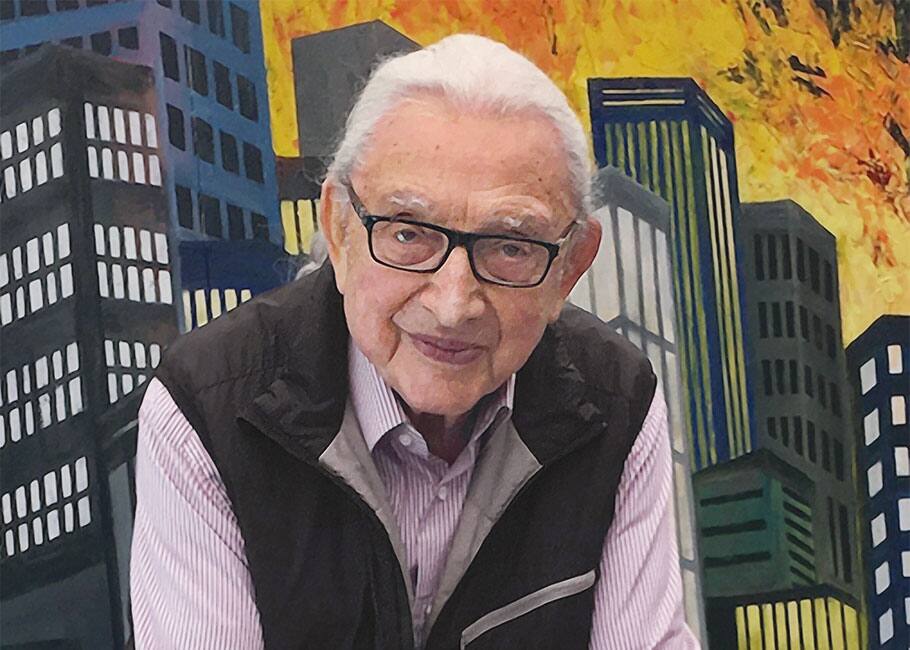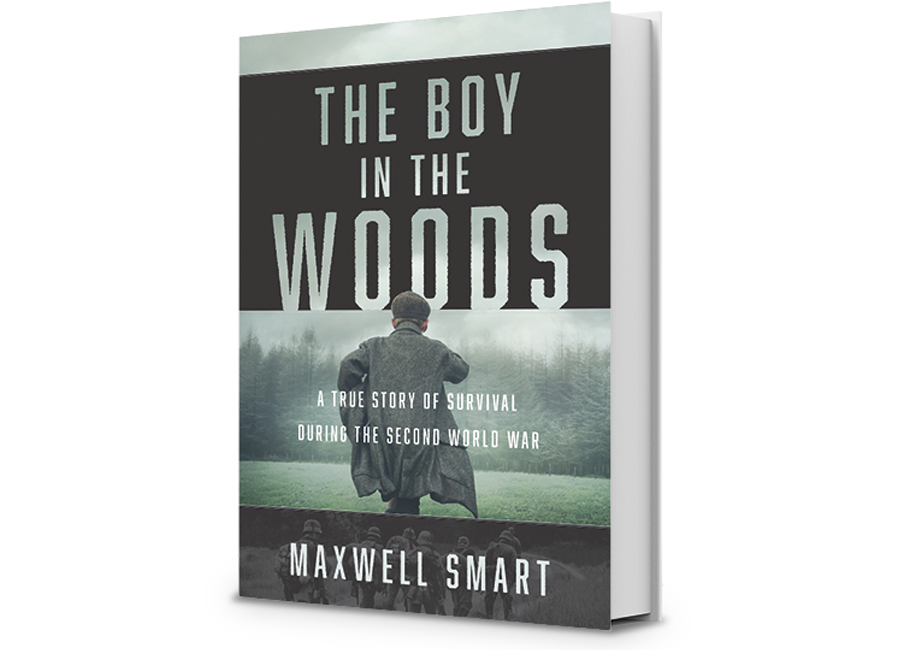
JODY SPIEGEL
Survival story
How hope emerged from the horrors of World War II
Oziac Fromm, born in 1930, was 11 years old when he saw his father taken away to be shot. Oziac might have suffered the same fate, but his mother selflessly urged him to save himself. Alone in a forest in eastern Poland, he dug a hole in the ground for shelter and foraged for food in farmers’ fields. Close to starvation and with his clothes in rags, he repeatedly escaped death at the hands of Nazi and Ukrainian thugs.
Yet he not only survived, but became an acclaimed Canadian painter under his adopted name of Maxwell Smart, whose works have brought joy to thousands.
How is this possible? How does someone endure what Smart did with his humanity intact? That is the incredible story that The Boy in the Woods tells.Costco member Smart, now in his 90s and living in Montreal, says that, for decades, he resisted telling his story. “I didn’t want to revisit the horrors. I didn’t want to remember,” he says. “But at the same time, I knew that I had to tell the story for my children. They had to know their grandparents’ names.”Then, several years ago, he heard the words of a Holocaust denier. “That did it,” he says. “I felt a reluctant determination to revisit the past. I had to break the silence of 60 years and tell the world the truth. I expanded an earlier memoir, Chaos to Canvas, to reveal the full story.”
When asked where he found the will to survive, Smart immediately credits his mother. “As she and my younger sister were being deported to their deaths, she said to me, ‘Save yourself. Run away. Run and try to live.’ I had to obey.”
Smart has nothing but praise for a poor Polish farmer named Jasko Rudnicki, who sheltered him in his home for a time, and then, when it became too dangerous, occasionally provided him with food. But for a year and a half, Smart mainly lived in the forest, cold, hungry, lonely and scared.
Then—succor. Smart befriended Janek, a young Jewish refugee who was also in hiding. Together, they rescued a baby girl, Tova, whose mother had been shot. Sadly, Janek died soon after, but Tova, Smart later learned, survived and lived a full life, thanks to the heroism of the two boys
The Boy in the Woods contains a quotation from Franz Kafka: “Anyone who keeps the ability to see beauty never grows old.” This aptly describes Smart, who showed artistic talent as a boy but never received art training and is completely self-taught. “Because my reality was so terrible, I escaped into my imagination,” he says. “Alone in the forest, I saw wonder in the night sky, and I painted it in my mind.”
Decades after the war, he opened his own art gallery in Montreal, Galerie d’Art Maxwell, and is still an active painter, known for his abstract canvases filled with colour and expression. “Painting is an escape for me,” he says. “I paint the universe, free space where you can just wander.”
Although writing the book was a painful process of remembrance, Smart hopes that it will bring awareness of the racism and hatred that he experienced, and that still exist in the world. “It must never happen again,” he says.
With each passing year we lose more survivors of the Holocaust. While we can’t stop their passing, I hope we never lose their stories. That’s why books such as The Boy in the Woods are so important.
Maxwell Smart was just 11 years old when he was separated from his family. His mother told him to save himself, and he did. He hid, foraged for food and even rescued a baby with the help of a friend. Smart not only survived, he went on to thrive as a successful and acclaimed artist.
The Boy in the Woods (Item 1617883) will be available in May in most Costco warehouses..
Andrée Laflamme Buyer, Books

